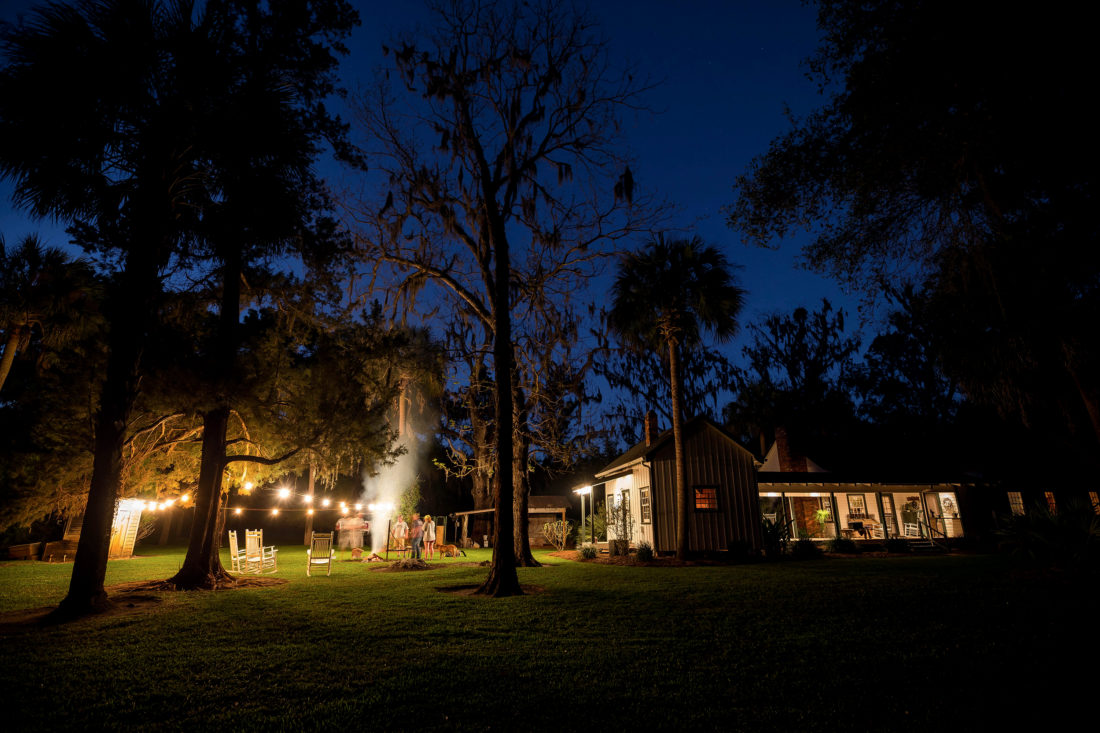Old Florida—the real Florida, the true Florida—can be a tough place to find. The state has reinvented itself so many times over—Disney Florida, Space Coast Florida, Golf Florida, Swamp Florida, Spring Break Florida, Retirement Florida—that its history and heritage can seem as faded as a daguerreotype, each new Florida iteration wearing away the details of the original. Few think of whip-poor-wills in an oak savanna when they think of the Sunshine State.
Unless, like Gray Drummond, you never left. A fifth-generation Floridian, Drummond has turned a vast sweep of family land—some 7,000 acres of North Florida pine flatwoods, magnificent live oak ridges, meadows, and marsh—into a sporting destination that puts as much emphasis on heritage as hunting. Florida Outdoor Experience offers Osceola turkey (a subspecies found only in Florida), deer, wild hog, and alligator hunts, all within a quick boat ride of world-class redfish and tarpon grounds. It’s a top-shelf operation—a three-day turkey hunt runs $3,300, including all lodging, meals, and guides—with a rare chance to see a side of Florida far from the well-beaten Orlando–Fort Lauderdale–Key West corridor.

Photo: Brett Seng
Gray Drummond and his daughter Elle.
The business’s name might not be easy on the tongue, but Drummond was adamant that the name reflect what he aimed to achieve. His day job is CEO of a community bank his father founded, and growing up, Drummond got to roam the backwoods of an idyllic wild Florida. “I didn’t necessarily set out to make a living as an outfitter,” he explains. “But I’ve been blessed, and I do have this need to show people this world I was born into, and share a kind of Florida experience that might seem like it no longer exists.”
It’s a stunning setting. There are two lodging options. On the main property, a restored Florida cracker house sits in an open grove of pines and oaks. That’s where Drummond spent his childhood in the fall and winter. A few miles away, a trio of homes perch on a high bluff overlooking the Suwannee River. One is Drummond’s grandparents’ original tin-roofed house, and there’s a river house where he practically lived during spring and summer. A sprawling dining pavilion is ringed with windows. Tag out on an Osceola turkey in the morning, and you can cast for redfish and tarpon within twenty minutes of the dock in the afternoon.
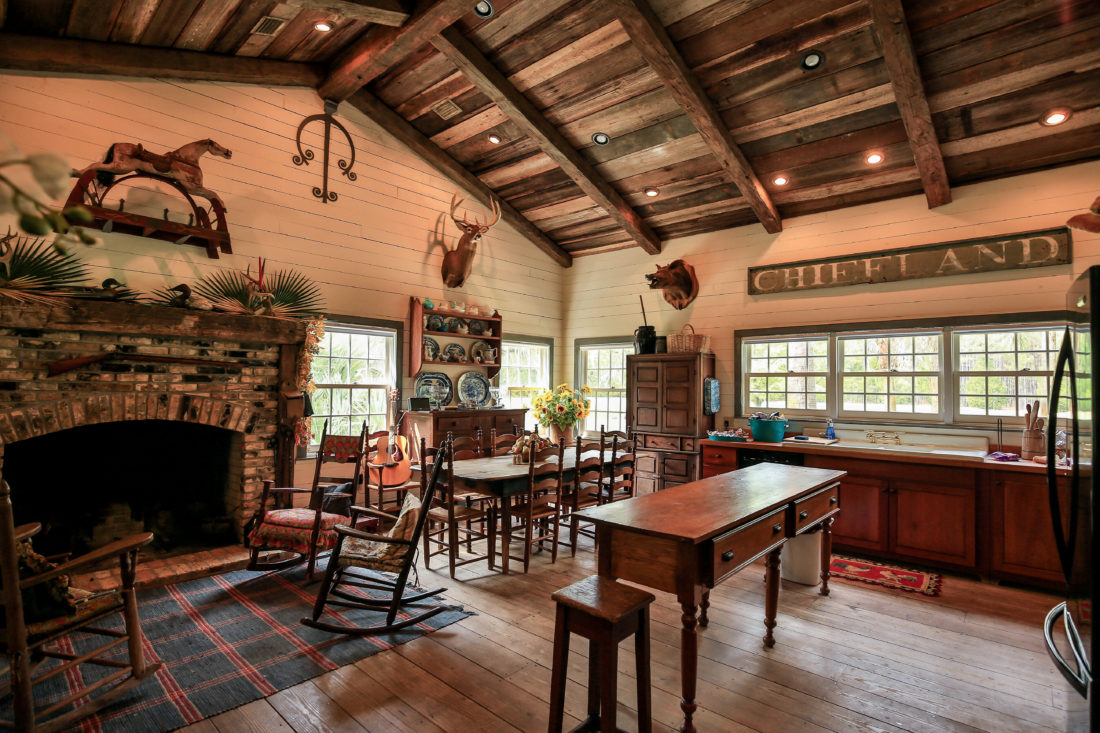
Photo: Courtesy of Florida Outdoor Experience
Inside the farmhouse lodge.
Most of FOE’s guides are Old Florida natives, including suchluminaries as saltwater fly-fishing ambassador Flip Pallot and Chris Wittman, cofounder of the South Florida conservation group Captains for Clean Water. Lacey Kelly manages the bookings; she’s a Fort Myers native and fly-fishing guide who moved back home after a stint running a fly shop in Belize. They all seem to share Drummond’s philosophy of guiding. “I never took any of this for granted,” he explains, “but when it’s a part of your everyday life, you can lose a bit of the wonder. But to see the awe on other people’s faces and know that you had a part in that—for me, that was a new kind of gratification. And honestly, I got hooked on that feeling as much as shooting a turkey or landing a tarpon.”
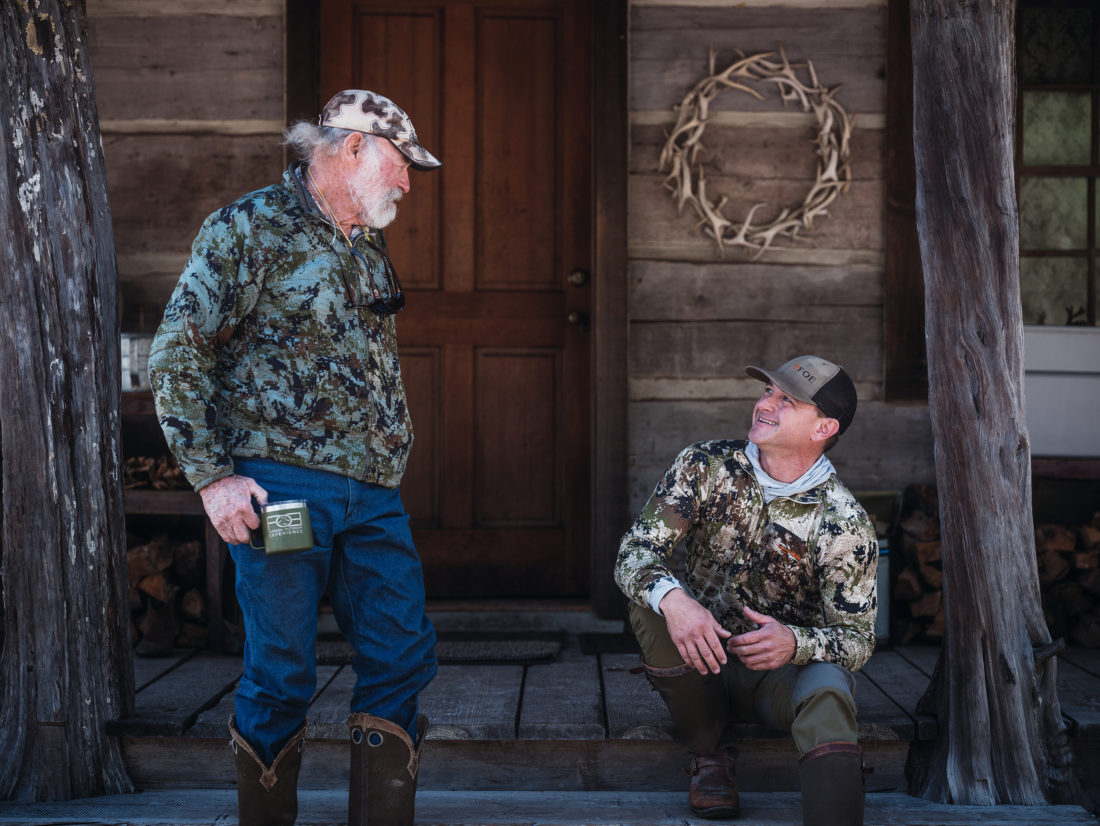
Photo: Kaleb White
Flip Pallot and Drummond swap stories on the porch.
On my second morning in the Osceola woods, I was happy to help him live vicariously. We were after an old bird that gobbled like crazy during my first morning there but never showed. Osceola turkeys are known for being a bit more closemouthed than most Eastern wild turkeys, tougher to lure and tricky to hunt in the dense Florida swamp. We set a pair of decoys along the edge of an open glade and backed into a gray tangle of saw palmetto and scrub. The dark silhouettes of tall oaks rose like black cumulus clouds over the far side of the opening. That’s where the birds typically roost, Drummond told me in a whisper.
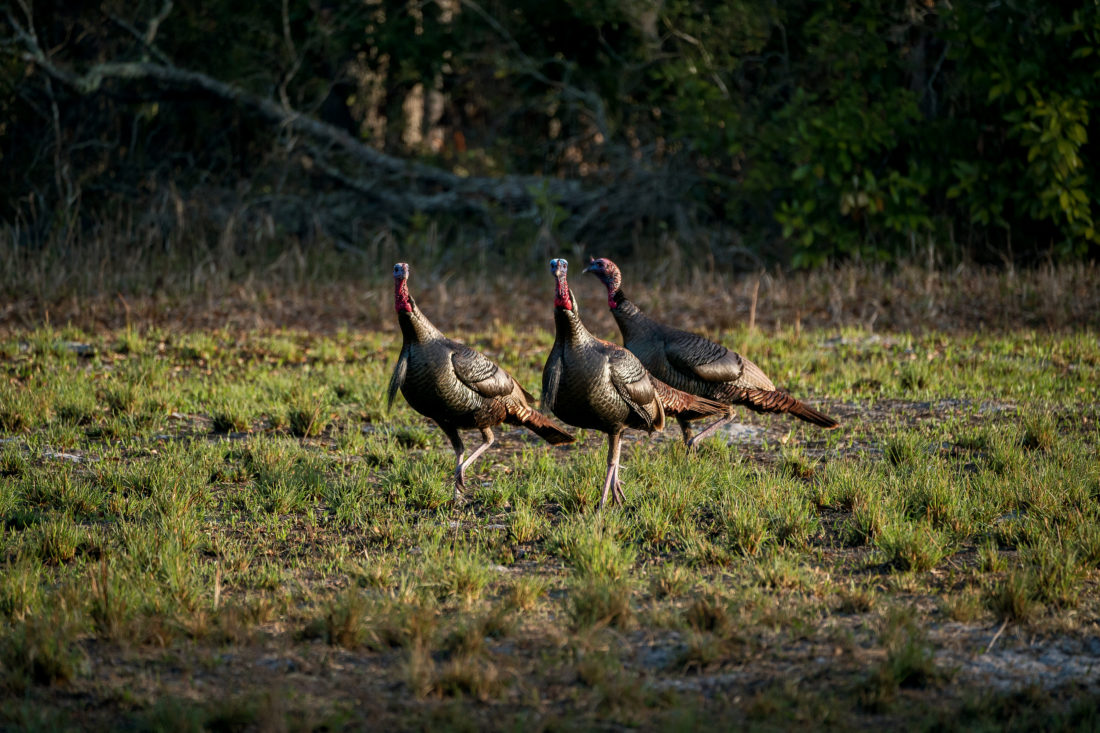
Photo: Brett Seng
Toms on a field edge.
But the turkeys hadn’t gotten our playbook. An hour after sunrise a pair of mature gobblers seemed to materialize out of the ether, hard to my left, along an old cattle trail leading into the savanna. I could barely make them out through a dense labyrinth of saplings, but an occasional flash of crimson had my heart pounding.
It was classic Osceola style—coming in silent, coming in from an unexpected direction. The birds slowly fed along the woods’ edge, putt-putt-ing not twenty yards away, until I had a clear shot through a basketball-sized tunnel in the brush. Twice I halted my trigger squeeze when the bird bent over to feed. I felt sweat dripping down my back. The showdown lasted a solid two minutes: head up, gun up, head down, breathe. Finally, I put the bead where the bird’s head had been two seconds earlier and pulled the trigger when I saw red. Turkey feathers flew. I’ll have to take Drummond at his word, because I can’t imagine that he had a bigger rush than I did.
The Drummond family has deep roots in a cherished character and vernacular community of Florida’s Suwannee River country. Some historians say the term Florida cracker is rooted in the loud, sharp-edged boastfulness of Southern backcountry pioneers. But Drummond always heard otherwise. “My grandmother would tell me about the men coming through the pines, pushing cattle, cracking their whips,” he says. “That’s when they knew to take the biscuits out of the oven, because the men were on their way. This was big cattle country, and the line is, there aren’t any cowboys in Florida. Down here, they’re cowmen.” He laughs. “I’ve always been told that’s where the term cracker comes from. It’s a point of pride around here to be from a true cracker family.”
The first Drummonds washed into Florida in the early nineteenth century. It was a time, Drummond says, “when everybody coming to Florida was running from something—debt, failure, the law.” As it turns out, the Drummond family has a history as independent thinkers. Gray’s ancestor was William Drummond, who went to Virginia as an indentured servant in 1637 and rose to status as the governor of Albemarle Colony (what would become North Carolina). He discovered a giant elliptical water body in the middle of the Great Dismal Swamp, now known as Drummond Lake, and in 1676 helped lead a frontier populist uprising against the Virginia governor and the British king. Every Virginia and North Carolina schoolkid learns about Bacon’s Rebellion, once thought to be a precursor to the American Revolution. William Drummond was eventually captured in Virginia’s Chickahominy Swamp and hanged for treason against the British crown. His family was stripped of its plantation and reduced to poverty. Not a bad set of bona fides for a future Florida cracker family.
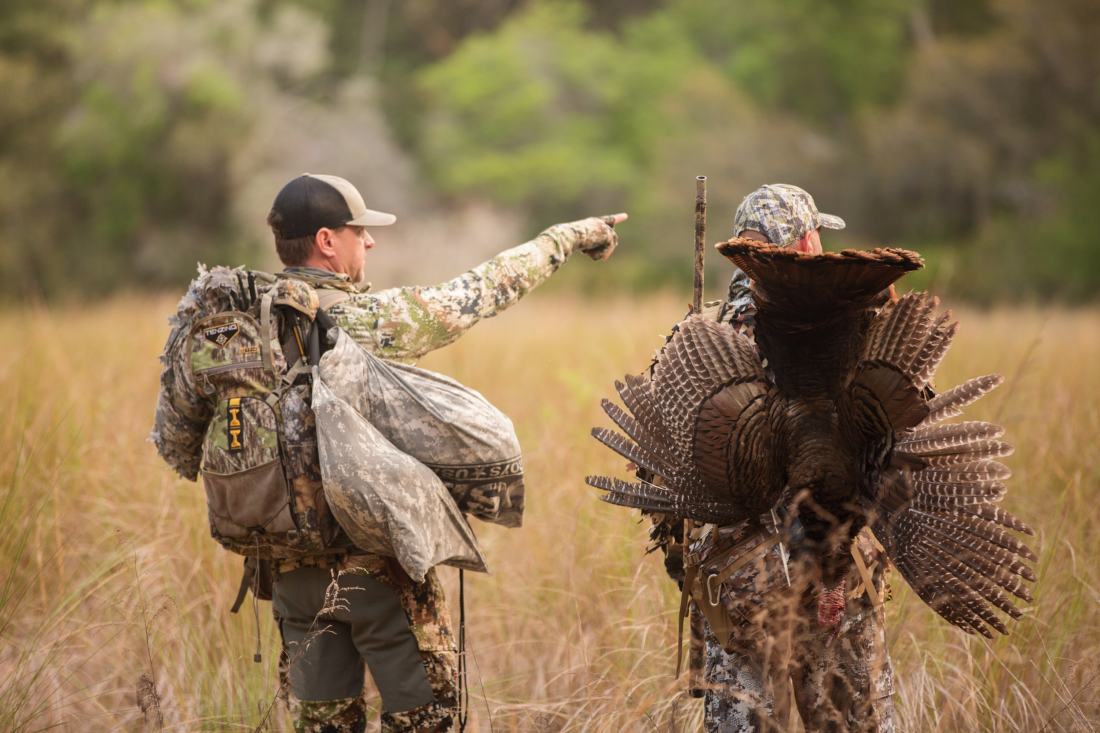
Photo: Sean Murphy
GG0219_Lodge_05
Drummond and a client after a productive morning.
By the time Gray Drummond was born, the family had moved from cattle and pines to banking: His great-grandfather started Chiefland’s first local bank in 1948. The bank was sold years later, but Gray’s father, Luther, almost immediately regretted losing his close ties to the town. “There was a void in him and a void in the community that he just wouldn’t say no to,” Drummond says. Later in life, his parents started over. In 1990 they took their life savings and invested everything in the Drummond Community Bank. The first office had six employees who worked in a shopping center beside the Winn-Dixie in Chiefland. It’s since grown to twenty locations in ten counties. These days, if Drummond is not at the bank, he’s in the woods.
That sort of community and family ethic shows in how FOE treats an excursion. There are no constructed turkey blinds. You don’t walk a well-worn path to a prebuilt hide. Each hunt is designed around where the birds are active, and Drummond’s philosophy is to engage guests in every aspect of the hunt.
It is a very intimate operation. “We sit around at night with everyone, talk out what happened that day, and plan the next morning’s hunt,” he says. “We want people to feel a part of the process, because in the moment, a lot of what we do is entirely up to the animal.” Each year, FOE hosts about sixty turkey hunters, hunting across multiple tracts of land. About 80 percent of first-time hunters return the next year. Many are pursuing the Grand Slam of turkey hunting—each of the four North American subspecies in a single year—and the Osceola is perhaps the most coveted of all.
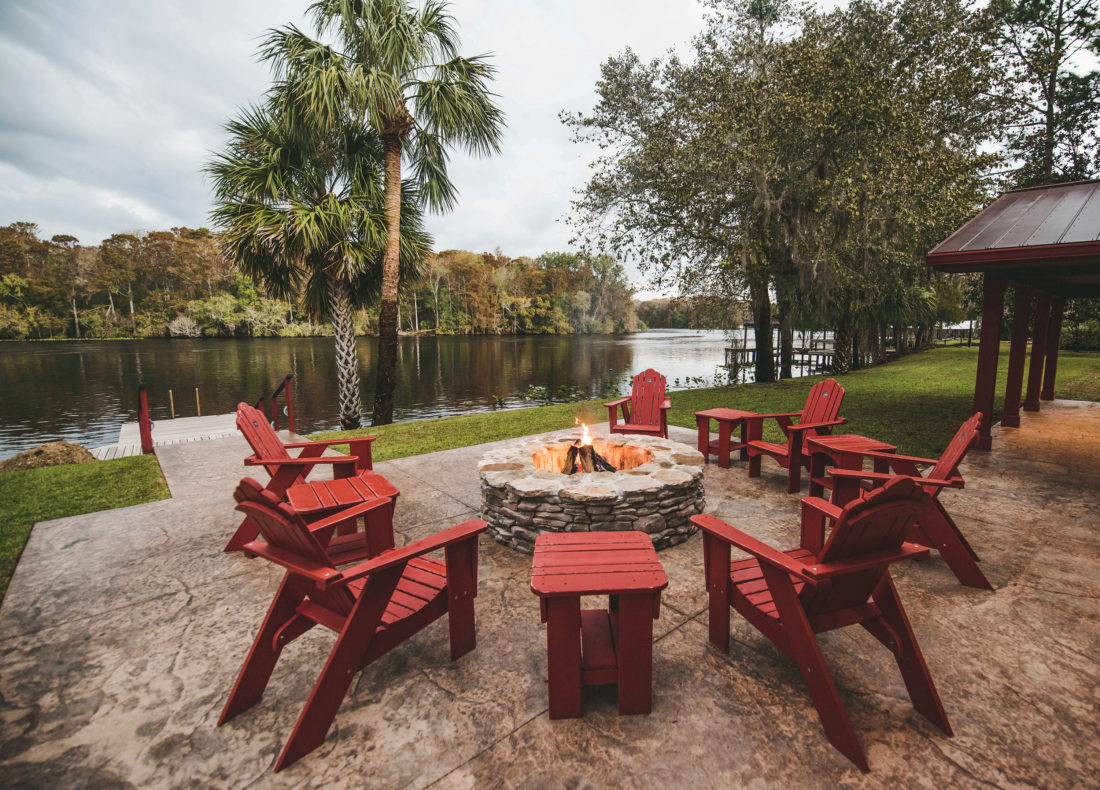
Photo: Oliver Rogers
The fire pit at the river lodge on the banks of the Suwannee.
On one evening hunt, Drummond parks a two-seater Ranger along an opening in the forest, a grassy flat ringed with pines and oaks. “This is the LD Hole,” he says, “named after my great-grandfather Luther Drummond.” It was the family’s traditional jumping-off spot for turkey hunting. He sits in the Ranger for a moment, the engine ticking as it cools. “This is where my grandfather parked his Buick, and he’d go one way and my dad would go the other. I can’t tell you how many times I’ve been right here, heart thumping at what the next few hours might hold.”
We pass another Drummond landmark, a massive lightning-blasted live oak, with a hollow trunk as dark as a grotto. Inside sits a rusty metal folding chair, the seat caved in and filled with leaves and twigs. It was Drummond’s great-grandfather’s favorite place to hunt, and the chair has remained here for decades. “It’s been a long time since anyone sat in that chair,” Drummond says, “and it’s weathered more hurricanes than anyone could count. But I always try to clear off the seat when I walk by. That sounds kind of funny, I know. But it’s the truth.”
He is tender about the past, and his family’s place on this land. “To own and take care of something that my forefathers owned and hunted on helps me know them in a different way, I guess. To carry on their legacy is a privilege for me, and I think it means a lot to the hunters who come here.”


